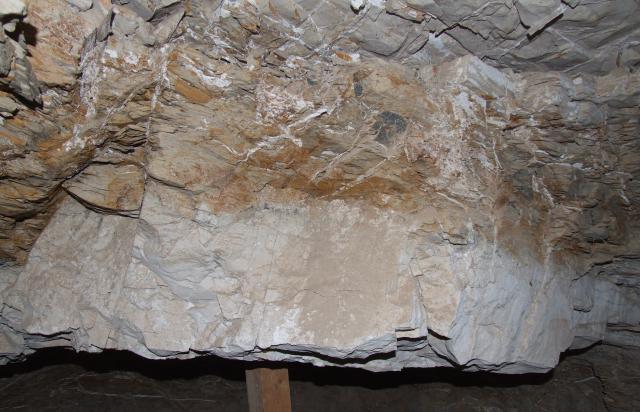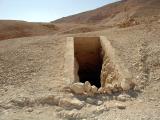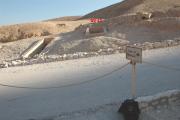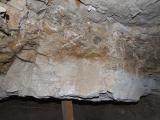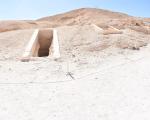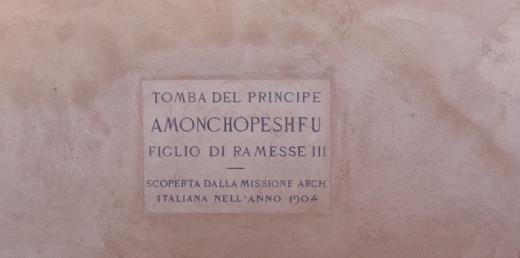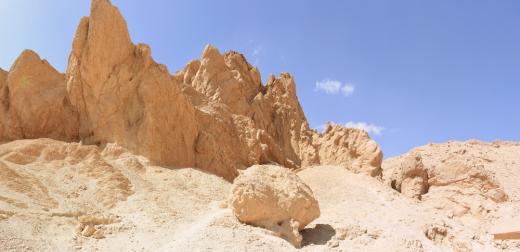QV 11
Anonymous
Entryway A
See entire tomb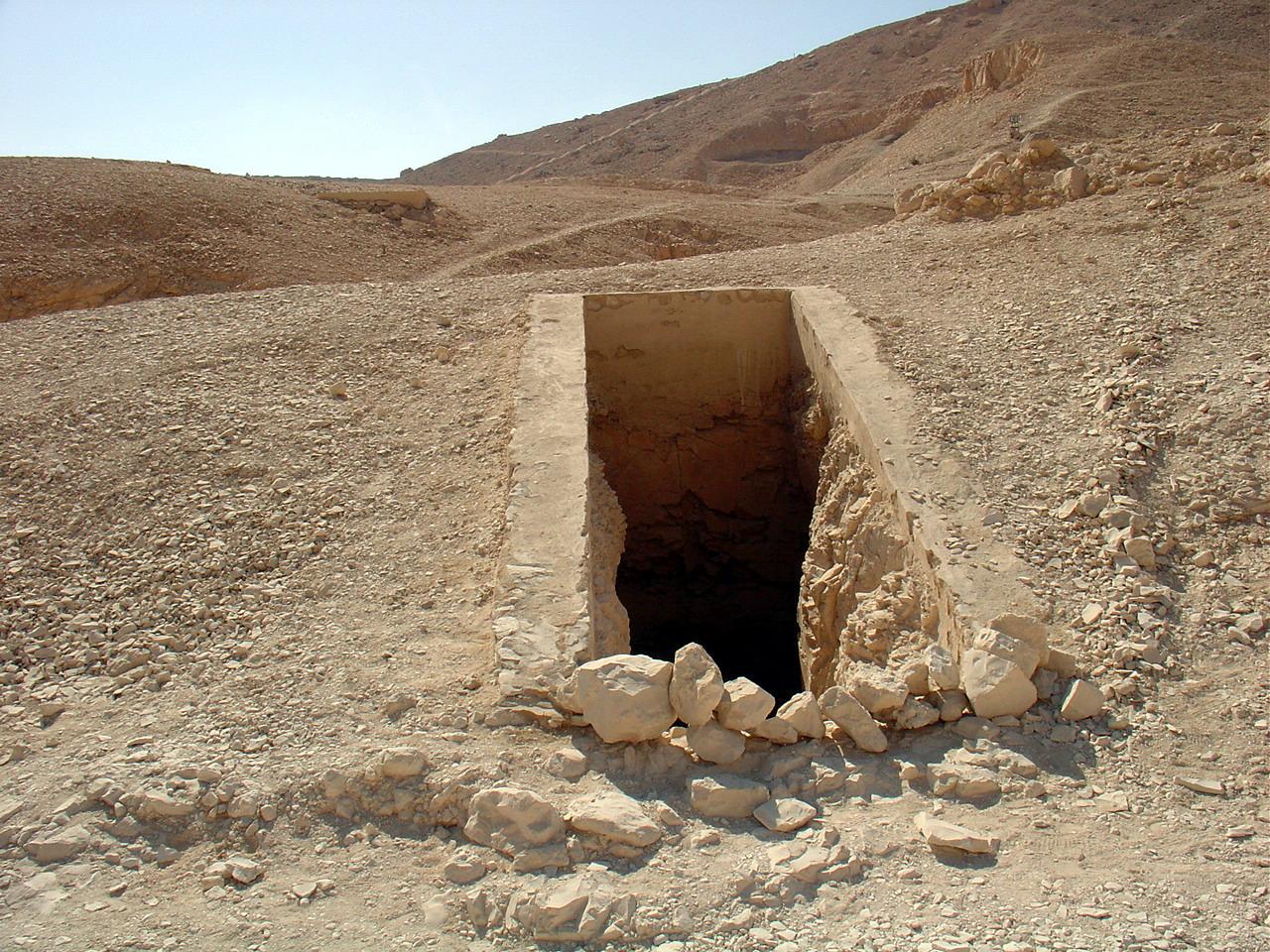
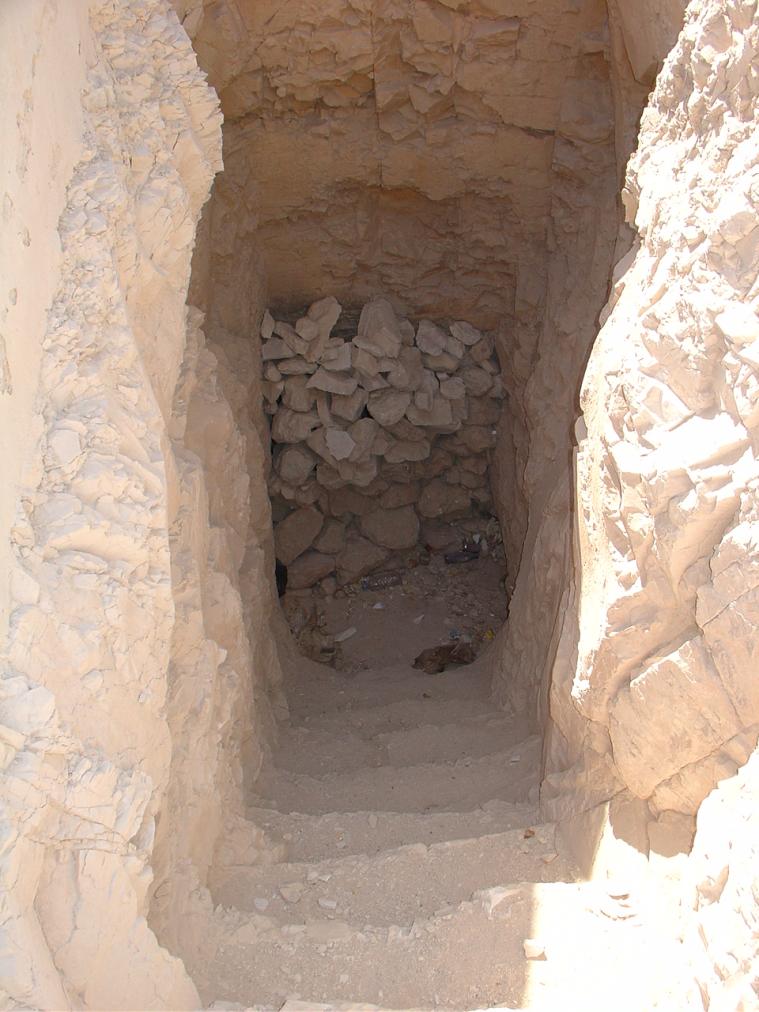
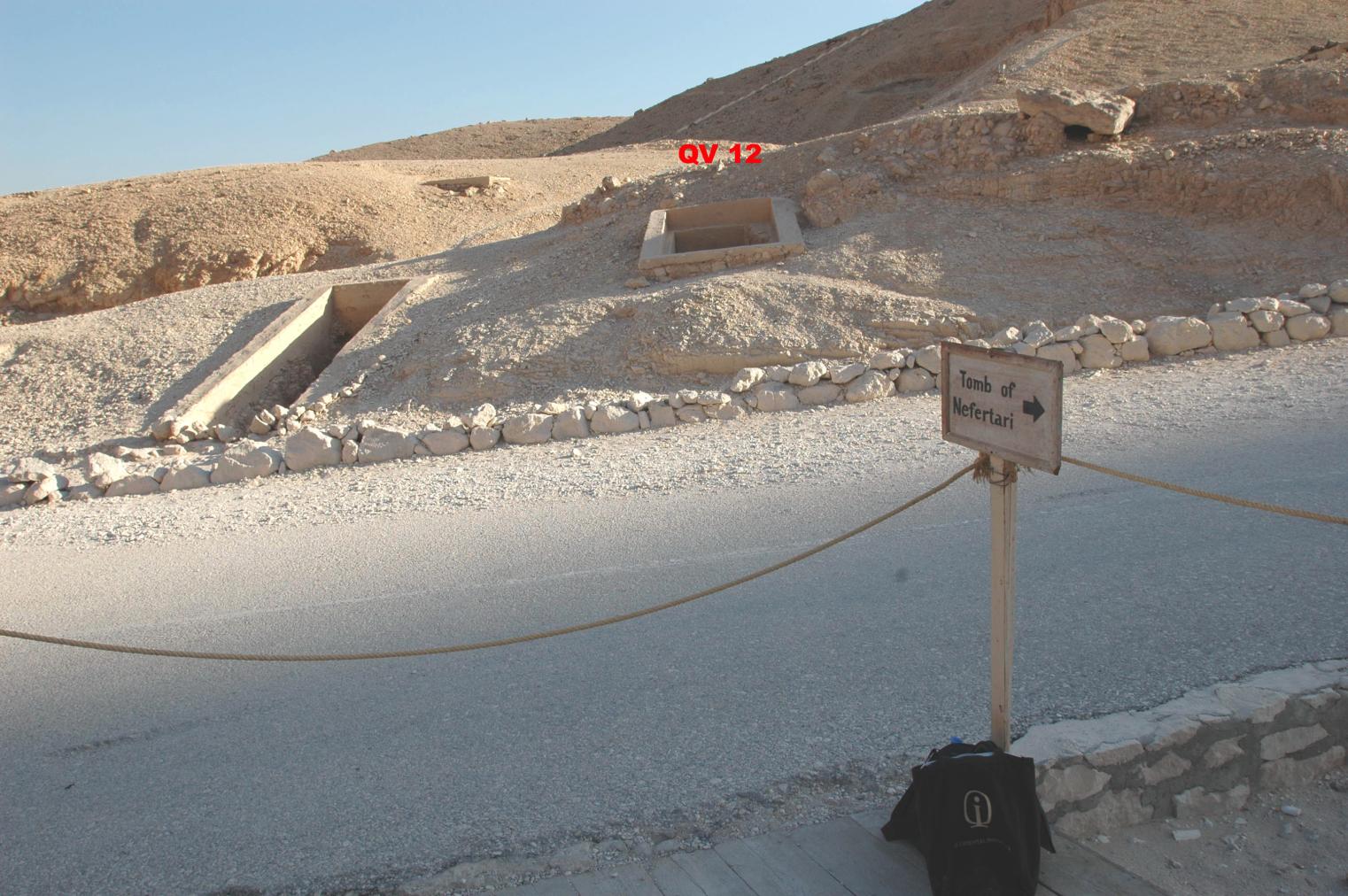
Burial chamber B
See entire tombLarge, undecorated rough chamber with two pits dug into the floor. A short passage connects QV 11 with QV 12, but it is unknown whether this was intentional or not.
Relationship to main tomb axis:
ParallelChamber layout:
Flat floor, no pillarsFloor:
One levelCeiling:
Flat
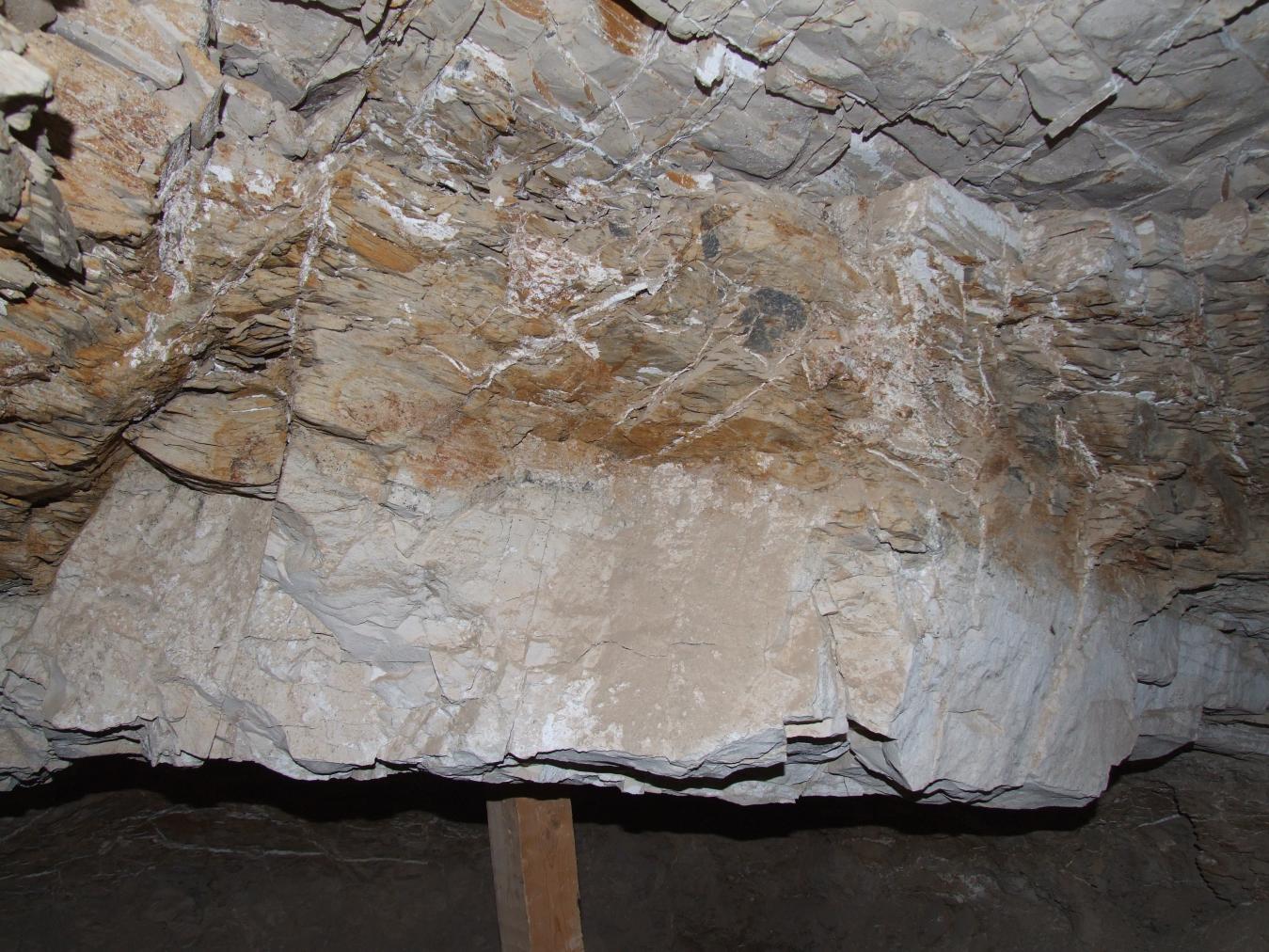
About
About
QV 11 lies on the south side of the main Wadi along the main visitor path and between QV 10 and the adjoined QV 12. Unlike most 18th Dynasty tombs, it has a Ramp with Steps. The entrance (A) has a large modern masonry surround on three sides, such that the ramp remains accessible. Two pits had been excavated into the floor of chamber (B). A short passage connects QV 11 with QV 12, but it is unknown whether this was intentional or not.
The tomb was recorded by Elizabeth Thomas (1959-60) as the "first of the large shafts and large rooms". She mentions that QV 11 is quite rough and that if there was an original connection between QV 11 and QV 12, the doorway would have been "enlarged from natural causes." Thomas also mentions an "excavation" in the rear of QV 11, but it is unclear if this refers to one of the two pits in the tomb later explored by the Franco-Egyptian Mission in 1985-6. The material recovered from the tomb indicates that it was reused extensively in the Third Intermediate, Late, and Roman Periods. Beautifully decorated Third Intermediate Period sarcophagi and burial equipment attributed to a 25th Dynasty individual named Pariyah were discovered in Burial Chamber B. Over 150 mummies from the Roman Period indicate that QV 11 was also used for mass burial.
Site History
The tomb was constructed in the 18th Dynasty. It was reused extensively in the Third Intermediate, Late, and Romans Periods.
Dating
This site was used during the following period(s):
Exploration
Conservation
Conservation History
Site Condition
According to the GCI-SCA, QV 11 has large transecting ceiling fractures running the length and width of the tomb. The two pits are cut into poor quality rock with prominent salt veins. Both pits have areas of fallen rock. Some wasp nests were observed. The highly fractured nature of both the marl and the shale in the tomb is the principal cause for concern and areas of loss. Due to the proximity of the entrance to the main drainage channel, it is possible that the entry of floodwater may have contributed to deterioration in the tomb, though no direct evidence of previous flooding was observed.


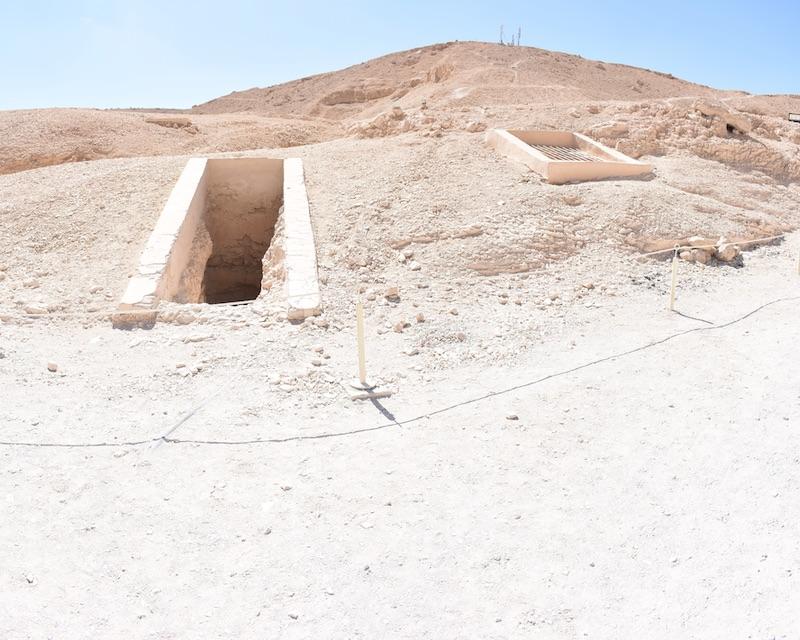





Articles
Tomb Numbering Systems in the Valley of the Queens and the Western Wadis
Geography and Geology of the Valley of the Queens and Western Wadis
Bibliography
CNRS mission report: Centre national de la recherche scientifique (France). Rapport d'activité 1987-1988 URA no. 1064, 1987-1988.
Demas, Martha and Neville Agnew (eds). Valley of the Queens. Assessment Report. Los Angeles: The Getty Conservation Institute, 2012, 2016. Two vols.
Lecuyot, Guy. Découverte dans la Vallée des Reines. Archéologia, 227 (1987): 28-33.
Macke, André, Christiane Macke-Ribet, Christian Leblanc, and Jacques Connan. Ta set neferou: une necropole de Thebes-Ouest et son histoire: momification, chimie des baumes, anthropologie, paléopathologie. Vol. 5. Cairo: Nubar Printing House, 2002.
Thomas, Elizabeth. The Royal Necropoleis of Thebes. Princeton: privately printed, 1966.

